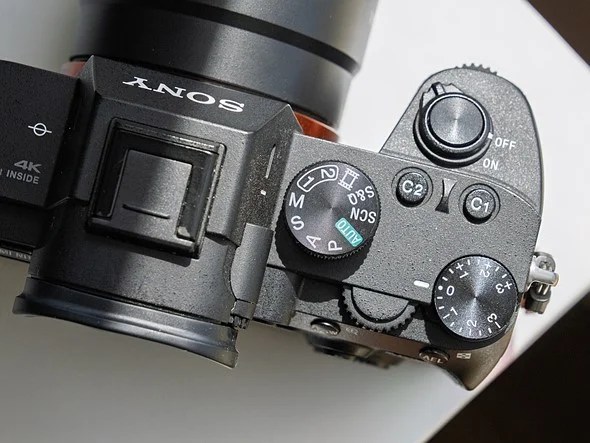| Many cameras provide a mode dial for easy access to different modes. |
Many aspiring photographers are led to believe that manual mode is gold standard and the only setting that uses “real” photographers. However, the manual mode is only a device that provides a camera, and can slow down you except or lead out the opportunities. Modern cameras provide advanced automatic mode and many semi-automatic such as aperture and shutter priority, providing more flexible options without renouncing complete creative control.
To select the manual – or if masters to hug other mode – is a sign of expertise, not a limit. In this article, we will explain what are different modes, and when you want to rely on each, help you embrace the full potential of yourself and your camera.
Auto
 |
The auto mode is usually displayed on the top dial in green, either with the word “auto” or a green “A”. In auto mode, the camera automatically sets all core settings. It includes aperture, shutter speed, ISO and white balance, but many cameras also adjust creative factors such as color mode, noise and more. For example, Canon Mirrorless cameras offer a visual intelligent auto setting, the purpose that is to detect the type of condition you are photographed and optimize all the settings for that situation.
Auto mode usually does not allow for any manual overridge of settings. You simply indicate and shoot, completely rely on the decision of the camera. It is ideal for casual shooters, initial and moments where speed is necessary and not creative control. However, it will limit creative control and not always choose the best settings for difficult situations.
Program
 |
The program mode, marked on the top dial by “P”, is similar to auto mode, but allows for some control. In program mode, the camera will be automatically selected for aperture and shutter speed Appropriate riskBut you can accommodate other settings such as ISO, exposure compensation and white balance, which are unavailable in full auto mode.
Additionally, most cameras give you some space to adjust the exposure settings selected by “shifting” the program. By doing this the brightness will be maintained continuously, but will change the shutter speed, aperture and/or ISO together, which if you want to prioritize the deep depth of field or sharp shutter speed. Each camera brand handles it slightly, however, so be sure to consult your camera manual as it does and does not allow.
Program mode is good for situations where you want a little more control than full auto, but still want the camera to set the core exposure settings for you. Street photography, everyday shooting, travel and other unexpected conditions are all conditions where the program mode can be used.
Scene
 |
Visual mode is usually labeled on top dial as “SCN”. In visual mode, you can choose various pre-programmed scenes, adapted to each different shooting scenarios, such as pictures, action, landscapes, macro, sunset, night views and more. When you choose a scene, the camera optimizes all settings for that situation. This is only beyond covering exposure settings, adjusting white balance, metering mode, color profiles and more.
Visual mode is helpful when you need quick, reliable results and do not have time or experience to adjust the settings for specific conditions manually. This portrait or close-up can choose suitable settings to blur the background when taking photographs, or capture images in challenging light situations where manual mode cannot cause the best color or exposure.
aperture priority
 |
Aperture priority mode is marked as “A” or “AV” on your camera dial. In this mode, you choose the desired Aperture To control the depth of the field, and the camera will adjust the shutter speed to produce a well -exposed image. It also allows complete manual control of other settings such as ISO and white balance, or you can personally set them automatically.
Aperture priority is perfect for conditions where the depth of the region is the main creative priority, but there is a danger of changing lighting. For example, if you are making a portrait out, you may want to make sure that you have the shallow depth of the area to blur the background. On the other hand, if you are taking pictures of the landscape, you want the constant deep depth of the area keeping in mind the entire scene.
Shutter priority
 |
The shutter priority is marked as “S” or “TV” based on your camera. This aperture is similar to priority, but instead of controlling the aperture, you control shutter speedThen, depending on the shutter speed you have chosen, your camera will automatically adjust the aperture for you.
Shutter priority is perfect for situations where you need to control how the speed is provided (either frozen or blurred) but not worried about the depth of the region. It is usually used while taking photographs of sports, wildlife and other action conditions where speed is priority and you need to be able to react quickly.
manual
 |
Manual mode keeps you under complete control of everything. You select aperture, shutter speed and ISO (although you can usually set the ISO automatically and still be in manual mode). Manual mode is the best when you want full creative control and each parameter is the time to manually adjust. It is also useful in difficult lighting conditions where your camera may not know what you are especially.
What is the best for you and use a given position
Some manufacturers have special modes in addition to the people described above, so be sure to check your manual for information on them. It is also important to remember that each camera mode is ideal for different conditions and people; There is no correct mode. The goal of using your camera is generally, in the least part, to make good photos, and whatever mode helps you achieve that goal, is correct.




